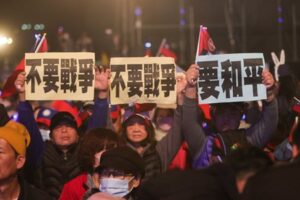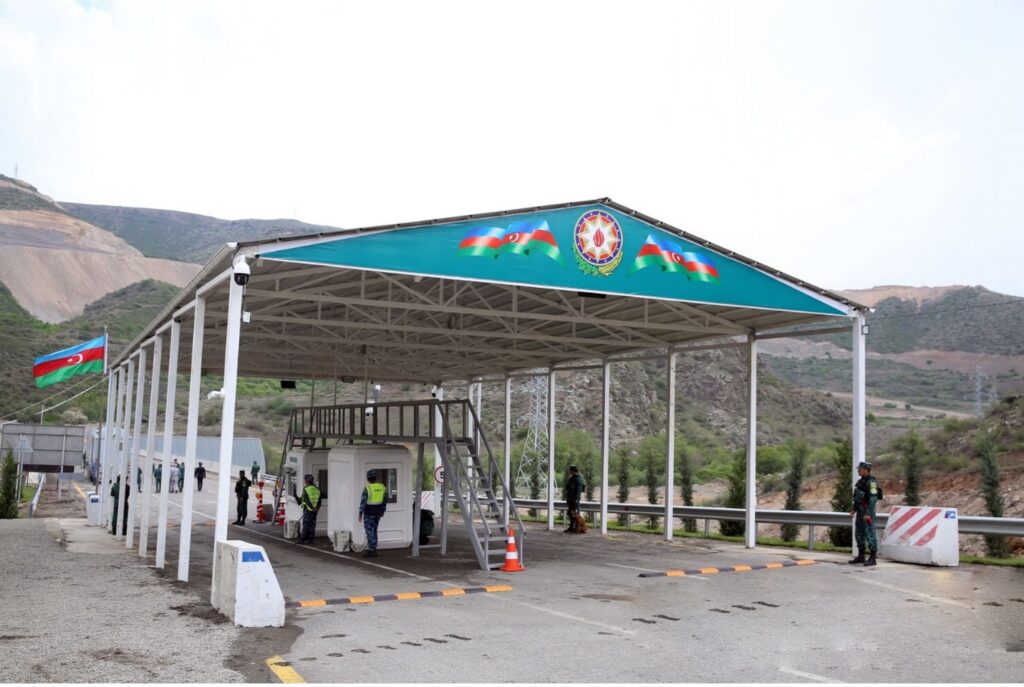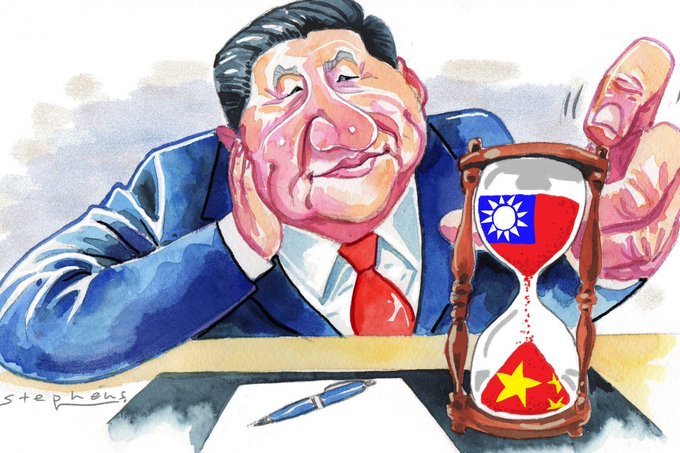Navigating the Cross-Strait Waters: The 2024 Taiwan Presidential Elections and the Evolving China-Taiwan Dynamics
The 2024 Presidential Elections in Taiwan marked a significant event not just within its own borders, but also in the intricate web of global geopolitics. As a pivotal democracy in East Asia, Taiwan’s electoral decisions, especially regarding its relationship with China, echo far beyond its shores, influencing regional stability and international power dynamics. This blogpost seeks to unravel the complexities of this relationship, examining the evolving political landscape within Taiwan, the shifting attitudes towards China, and the broader geopolitical implications.
Overview of Taiwan’s Political Evolution
Over the past half-century, Taiwan’s political landscape has undergone profound transformations, reflecting shifts in cross-strait relations, international dynamics, and internal political developments. These changes have been driven by a range of factors, including evolving geopolitical tensions, the island’s growing national identity, and changes in the global economic and political order. This period has seen Taiwan navigate through a complex web of challenges and opportunities, carving out a unique position in both regional and global contexts.

Image: The flag of the Republic of China, Taiwan (Source: Eiki Berg)
This evolution has been characterized by notable landmarks, such as the transition from martial law to a vibrant democracy, the emergence of Taiwan as a significant economic power, and the island’s complex and often contentious relationship with China. Internally, Taiwan’s political arena has witnessed shifts from authoritarian rule to a multi-party system, reflecting a maturing democracy and changing societal values. Externally, Taiwan has had to constantly balance its relationships with major powers while asserting its own identity on the world stage.
The relationship between Taiwan and China, rooted in the aftermath of the Chinese Civil War in 1949, has been characterized by a complex mix of political contention and economic interdependence. Central to this relationship is the 1992 Consensus, a tacit agreement reached during talks between China and Taiwan in 1992, emphasizing ‘One China’ with separate governing authorities. However, the 1992 Consensus is mired in controversy, including debates over its very existence and the extent of autonomy or space Taiwan possesses under the ‘One China’ principle. Despite these uncertainties and disputes, Taiwan and China have long interacted within the status quo created by the 1992 Consensus. This ambiguous consensus, or the lack thereof, has become a cornerstone of the divergent paths Taiwan and China have navigated in their respective political narratives, often serving as a diplomatic buffer while allowing room for differing interpretations of national sovereignty.
In the realm of global geopolitics, particularly against the backdrop of intensifying US-China rivalry, Taiwan’s position is critically important. For China, Taiwan is not only an unresolved issue of national unification but also a strategic asset in its maritime expansion in the Indo-Pacific region. Conversely, the United States and its allies view Taiwan as a vital democratic ally and a strategic counterweight to China’s expanding influence. However, they do not support Taiwan’s independence, maintaining a delicate balance in their approach to cross-strait relations.
In the domestic political sphere, Taiwan has historically been dominated by two major parties: the Democratic Progressive Party (DPP) and the Kuomintang (KMT). However, a significant transformation occurred with the rise of the Taiwan People’s Party (TPP), transitioning Taiwan from a two-party system to a more pluralistic three-party system. This shift reflects not only evolving societal values but also the complex attitudes of Taiwan’s electorate toward China.
This political shift mirrors changes in societal attitudes and demographic trends within Taiwan. A burgeoning sense of national identity, especially among the younger generations, along with a more globally connected and politically conscious populace, has profoundly influenced political discourse. These societal changes have prompted a more nuanced and varied approach to Taiwan’s relationship with China, challenging the traditional narratives of the two major parties and fostering the emergence of alternative political voices.
Amidst these complex evolutions, Taiwan’s stance on China and the approaches of various political parties have continually adapted. This ongoing transformation sets the stage for further exploration of Taiwan’s future strategies and policies in the subsequent sections.
Divergent Perspectives: The Stances of Taiwan’s Major Political Parties on the China Issue
In the context of evolving dynamics in Taiwan-China relations, the three major political parties in Taiwan — the Democratic Progressive Party (DPP), the Kuomintang (KMT), and the Taiwan People’s Party (TPP) — exhibit a complex stance that reflects both consensus and divergence. While these parties agree on certain fundamental issues, such as steadfastly maintaining the status quo, vigorously defending Taiwan’s democratic values, and collectively opposing the ‘one country, two systems’ concept, they differ significantly in their specific approaches to handling relations with China. These differences underscore the unique ideologies, historical backgrounds, and responses to the changing sentiments of the Taiwanese populace. Thus, despite the common ground on key issues, these parties demonstrate distinct political strategies and objectives in addressing the China issue.
The approach of the ruling DPP (the Green) towards China is characterized by a strong emphasis on asserting Taiwan’s sovereignty and independence. While actively opposing the notion of ‘One China’ as outlined in the 1992 Consensus, the DPP has subtly integrated the concept of Taiwan’s independence into its governance. This approach includes symbolic moves like altering the national title to ‘Republic of China, Taiwan’ in formal settings. However, constrained by its reliance on the United States, the DPP’s policies reflect a form of ‘technical independence’ rather than outright legal independence. This stance has led to heightened tensions with China, pushing cross-strait relations to a near-conflict state.
During its eight years in power, the DPP, under increased threats from China, has significantly bolstered Taiwan’s defense capabilities, a move that has received support from the United States. In the recent elections, the DPP demonstrated its ongoing reliance on U.S. support by selecting Hsiao Bi-khim, a former Taiwanese representative to the U.S., as a running mate. Hsiao, who is of Taiwanese-American descent and a figure trusted by American officials, represents a strategic choice by the DPP. Her selection not only signals a commitment to maintaining strong ties with the U.S. but also addresses U.S. concerns regarding DPP’s pursuit of Taiwan independence.

Image: Presidential candidates from left to right Ko Wen-je (TPP), Lai Ching-te (DPP) and Hou Yu-ih (KMT) (Source: AFP)
In contrast, both the KMT (the Blue) and the TPP (the White) have focused on reducing the risk of conflict with China. While they also advocate for strengthening relations with the United States, these parties place significant emphasis on mitigating risks and maintaining a more balanced approach in relations with China. Their strategies emphasize strengthening Taiwan’s self-defense capabilities while advocating for dialogue, economic cooperation, and a reduction in military tensions. Despite their similar stances, the parties receive different reactions. The KMT, aligning with the 1992 Consensus, is seen as a preferred choice by China but struggles to shake off the ‘pro-China’ label, making it difficult to attract young voters who value autonomy and democratic values. Conversely, the TPP, with a stance similar to the KMT’s, positions itself as pragmatic and flexible, not aligning strictly with either the DPP (Green) or KMT (Blue) ideologies. This approach has garnered attraction, especially among young and centrist voters. However, the TPP faces skepticism from the United States, which appears to be less trusting of the party compared to the DPP and KMT.
The 1992 Consensus remains a fundamental element in shaping the policies of these parties towards China. It serves as a barometer for their respective approaches to cross-strait relations. The DPP’s outright rejection of the consensus aligns with its pursuit of a distinct Taiwanese identity, whereas the KMT’s endorsement, albeit with an emphasis on peaceful coexistence, reflects its more conciliatory approach. The TPP’s ambiguous stance on the consensus, meanwhile, reflects its aim to carve out a middle path in cross-strait relations.
Dynamics and Results of the 2024 Taiwan Elections
The 2024 Taiwan elections were marked by distinct and varied strategies from the major political parties, each tailoring their message to resonate with different segments of the electorate.
The DPP’s campaign was heavily centered on reinforcing Taiwan’s sovereignty and independence, portraying China as a significant threat. This messaging was coupled with an emphasis on the DPP’s close ties with the United States, positioning this relationship as crucial for Taiwan’s security and international support. The KMT’s campaign strategy focused on stability and economic pragmatism. Advocating for peaceful coexistence and enhanced economic ties with China, the KMT aimed to appeal to voters who favored a reduction in cross-strait tensions, emphasizing the potential economic benefits of such an approach. The TPP’s campaign, underpinned by a message of moderation and pragmatism, sought to strike a balance between maintaining Taiwan’s sovereignty and engaging constructively with China. This stance, especially from the TPP, resonated with younger voters, reflecting a growing appetite for new political narratives that diverge from the traditional DPP-KMT polarization. Although the TPP’s stance on China is closely aligned with that of the KMT, the TPP’s avoidance of explicitly endorsing the 1992 Consensus has made it more appealing to young voters who seek a fresh perspective in cross-strait relations.
Image: At the KMT’s election rally, supporters carried the national flag and held up slogans stating ‘No to war, yes to peace’ (Source: United Daily)
The results of the 2024 election paint a nuanced picture of Taiwan’s political landscape. The Democratic Progressive Party (DPP) garnered 40% of the votes, a significant figure that underscores substantial support for its sovereignty-oriented stance. Yet, this number also suggests that a hardline approach towards China wasn’t overwhelmingly favored by the entire electorate. Despite evident backing for the DPP’s position on Taiwan’s sovereignty, the majority of voters appeared to favor a more balanced approach, one that seeks to alleviate tensions and foster dialogue with China. This sentiment was clearly reflected in the combined 60% vote share secured by the Kuomintang (KMT) and the Taiwan People’s Party (TPP). Nonetheless, the KMT, traditionally a dominant force, also faced challenges in balancing its pro-92 consensus stance with growing pro-independence sentiment among voters. Notably, the TPP’s rise as a key minority party reflected the electorate’s desire for new political narratives and different approaches to cross-strait relations.
Table 1: 2024 Taiwan Presidential Election Results
| Candidate Pair | Party | Votes | Percentage |
| Lai Ching-te / Hsiao Bi-khim | Democratic Progressive Party (DPP) | 5,586,019 | 40.05% |
| Hou You-yi / Chao Shao-kang | Kuomintang (KMT) | 4,671,021 | 33.49% |
| Ko Wen-je / Wu Hsin-ying | Taiwan People’s Party (TPP) | 3,690,466 | 26.46% |
Table 2: 2024 Taiwan Legislative Election Results
| Party | Seats |
| Kuomintang (KMT) | 52 |
| Democratic Progressive Party (DPP) | 51 |
| Taiwan People’s Party (TPP) | 8 |
| Independents | 2 |
Source: Central Election Commission, Taiwan, ROC
Note: The total number of eligible voters was 19,548,531, with over 14 million people voting, resulting in a voter turnout rate of 71.86%.
This considerable segment of the electorate, opting for parties that advocate reduced conflict and moderate exchange with China, signals a public sentiment that is more nuanced than a simple binary choice. Particularly noteworthy is the TPP’s strong performance among younger voters, which sends a clear message: a significant portion of Taiwan’s population, especially its youth, is searching for alternative paths in cross-strait relations. Crucially, this change highlights a dual desire among voters: to maintain Taiwan’s sovereignty and autonomy, while deviating from the DPP’s traditional hardline stance, and expressing clear discontent with the 1992 Consensus. This indicates that Taiwan’s future approach to managing its relationship with China will likely need to navigate these diverse perspectives, striving to balance aspirations for sovereignty with the practicalities of economic interdependence and a desire for peaceful coexistence.
Post-2024 Elections: China’s Responses and Cross-Strait Future Outlook
As the 2024 Taiwan elections approached, reports emerged of China adopting a comprehensive strategy to influence Taiwan’s internal political scene and assert its claims over the island. Although Beijing has consistently denied any interference in the elections, Taiwan’s ruling party, the DPP, has accused China of engaging in such activities.
Evidence of Beijing’s direct meddling in the election is yet to be confirmed, but it’s clear that their tactics spanned diplomatic, economic, and military areas, aimed at putting pressure on Taiwan. Diplomatically, Beijing stepped up efforts to reduce Taiwan’s international presence, convincing more countries to break diplomatic relations with Taipei and limiting its involvement in international platforms. Economically, China utilized its deep economic connections with Taiwan in a ‘carrot and stick’ strategy: offering economic benefits to endorse the ‘One China’ policy while threatening economic repercussions for Taiwanese entities supporting independence. In terms of military strategy, China intensified its activities near Taiwan, including more frequent air and naval operations, to demonstrate its military strength and commitment to its territorial claims.
Following the election, which saw the DPP retain power, signaling an ongoing push for Taiwan’s sovereignty, the Chinese government responded with strong criticism. Beijing’s statements post-election reaffirmed the ‘One China’ policy and declared any Taiwanese independence moves as invalid. This stance underlined that Beijing’s approach towards Taiwan remains unchanged, regardless of the election outcome. China continues to view Taiwan as an integral part of its territory and cautions against any independence moves, expressing willingness to use all necessary means, including military action, to prevent Taiwan from breaking away.
The developments following the election suggest that Beijing might escalate diplomatic and military pressure on Taiwan to deter steps toward independence and preserve the current state of affairs. Indeed, Beijing’s retaliatory actions have already commenced. Just two days after the election, Nauru announced the severance of diplomatic ties with Taiwan. This makes Nauru the tenth country to break off relations with Taiwan during the eight years of Democratic Progressive Party (DPP) governance, reducing Taiwan’s number of diplomatic allies to just twelve. Such actions foreshadow increasing tensions in the Taiwan Strait, particularly if Taiwan or its international allies engage in steps perceived as provocative by Beijing.
Another major issue is the future of the Economic Cooperation Framework Agreement (ECFA) between Taiwan and China. This crucial trade and economic agreement is now under threat due to the deteriorating political relationship. Once seen as a landmark in economic cooperation, the ECFA now faces uncertainties amidst the strained ties between the two sides. This discord raises questions about the sustainability of the agreement, posing economic risks for both countries. The ECFA, vital for trade and investment flows, if disrupted, could lead to economic disturbances, affecting businesses and possibly leading to broader regional economic implications.
Furthermore, China’s military maneuvers post-election reflect the delicate balance in the Taiwan Strait. Increased military exercises and displays of force near Taiwan indicate Beijing’s resolve to assert its territorial claims and readiness to counter any perceived threats to its sovereignty. This military posturing not only amplifies regional tensions but also raises concerns about the stability of the region and the possibility of escalating conflicts.
For the long-term outlook, cross-strait relations are likely to be shaped by a combination of global geopolitical dynamics and internal political developments in both Taiwan and China. The evolving U.S.-China rivalry and shifting global political landscape will significantly influence the trajectory of cross-strait interactions. Taiwan’s strategic position in the Indo-Pacific region makes its fate intrinsically linked to the maneuvers of major world powers. Concurrently, internal political shifts in Taiwan and China will play a pivotal role. The emergence of parties like the TPP and changes in public sentiment within Taiwan will shape its approach towards China. Similarly, any shifts in China’s domestic political scene or leadership could prompt new directions in its policy regarding Taiwan.
Despite prevailing trends pointing towards ongoing tensions, the potential for future dialogue and reconciliation remains a possibility. Shifts in leadership, international pressures, or significant geopolitical developments could open avenues for renewed communication, possibly leading to a gradual reduction of tensions. Additionally, the economic interdependence between Taiwan and China is expected to continue, potentially acting as a moderating force. This economic reality could encourage both sides to maintain a degree of cooperation and avoid actions that would significantly disrupt economic relations.
Conclusion: Navigating Uncertain Waters
The 2024 Taiwan elections have catalyzed a complex and uncertain era in cross-strait relations. While the immediate future suggests persisting tensions and challenges, the long-term landscape is open to various outcomes, shaped by numerous factors both within and external to Taiwan and China. Successfully navigating this intricate environment will require Taiwan to strike a delicate balance between preserving its democratic values and identity, managing its economic relationship with China, and responding to the changing geopolitical climate.
An additional factor contributing to this complexity is the simultaneous unfolding of the 2024 U.S. Presidential Election. This concurrent political event introduces another layer of uncertainty to the already intricate Taiwan-China dynamics. The results of the U.S. election are poised to significantly influence American foreign policy in the Indo-Pacific, particularly in relation to Taiwan and China. The nature of U.S. support, both diplomatic and military, has been a cornerstone of Taiwan’s defense strategy and international position. Any shifts in the U.S. administration or its policies could substantially reshape the strategic framework within which Taiwan operates.
As Taiwan looks to the future, it faces the challenge of steering through these uncertain waters with strategic foresight. The island’s leadership must continuously adapt to a fluctuating international environment, balancing the pursuit of sovereignty and democratic values against economic and security realities. In this complex scenario, Taiwan’s diplomatic and strategic choices will be critical. The interplay of domestic politics, cross-strait relations, and global geopolitical shifts will remain at the forefront of Taiwan’s narrative in the years ahead.
Author: Chueiling Shin






